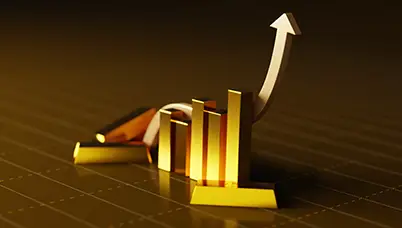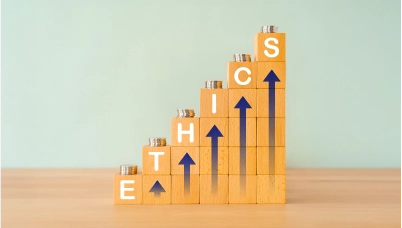The Dubious Recovery
Posted On Thursday, May 15, 2014
In our previous article, we concluded that there isn`t much to look for recovery as far as the employment scenario is concerned in the US. Here, we analyse if people are at all engaging in a credit boom i.e. borrowings breeding into a spending binge, that would eventually generate the growth rates as predicted by many. If not, then what is the recovery all about, generated by trillions of dollars doled in by the Fed?
Post the 2008 financial crash, loan growth has been relatively much lower than it usually has been. The loan growth has largely been restrained below the 8% levels at peak and declining as seen in the chart below - much lower growth than it used to be coming out of recession. It indicates that the consumer has not been confident enough to borrow. The absolute condition of balance sheets matter and we should not be surprised that this is a factor weighing on consumer and business confidence. People are waking up to the fact that they can`t randomly borrow their way out just on the basis of notional wealth which can quickly vaporize at the first signs of risks to the economy.

Some might argue that although growth has remained relatively muted it has now turned positive which is far better than the deleveraging i.e. paying off the debt to decrease the financial leverage, that ensued as a result of the aftermath of the crisis.
Yes, borrowing from consumers has been growing but the major contribution has been coming from federal government guaranteed student loans which is unlikely to add to consumption. The past credit boom came from the likes of credit card debt, the auto loans and the home equity line of credit; these are the ones still showing signs of deleveraging.

Source: FRBNY Consumer Credit panel / Equifax
But that`s not all; many of those in their early 20s, seeing how hard it is to find a job, are staying in college for longer, amassing outrageous levels of student debt in the process. Consumer credit increased by US$173bn YoY as on March 2014, with federal student loans accounting for US$125bn or 72% of that total increase. It`s indeed logical to see the interest on student loans rising by the day and are now at all time highs. The bulk of the credit is taken to pay for the burgeoning education fees and this will likely be a drag on the economy even over the long run as well. This is obviously not a sustainable solution.
One bright spot
We can clearly conclude that from a consumer perspective, it`s been a weak recovery from an employment side and also the resulting ability of consumers to borrow and spend seems compromised. However, there is one thing that we are closely watching for - if there are any signs of economic momentum building up. It is worth noting that recent months have seen a bit of a pickup in the commercial and industrial (C&I) credit. Much of the increase in bank credit has been primarily driven by the increase in C&I loans. As of March 2014, the total bank credit grew at 2.9% YoY whereas the growth in commercial and industrial (C&I) loans was 9.8% YoY.

We would continue to monitor this space but it`s unlikely to lead to an economic breakout. This pessimism is largely on account of a few signals already alarming caution. A survey of senior lending officers revealed a greater percentage of banks easing standards and reducing spreads on C&I loans to firms of all sizes. There`s deterioration in contract terms and pricing and that`s potentially the kind of behavior that drives a crisis...sounds familiar.
Rest, The recovery enthusiast
The improvement in consumption is also likely driven by people dipping into their kitty. US personal savings have fallen from 5.1% of disposable income in September 2013 to 3.8% in March 2014 is indicative of the fact that people have been forced to fall back on their savings to make ends meet as incomes are not enough if at all and they are clearly shying away from borrowing their way out. Clearly, a pickup in consumption does not look that convincing if it is only driven by a falling savings rate.

However, optimists continue to point out at recovery in house prices and surging stock markets as signs of growth.
One important aspect of all the supporters of the necessity of QE is clearly the improvement in household balance sheets caused by the recovery in house prices and the surge in American stock market. With all the liquidity sloshing around it`s not surprising to see asset markets increase in value. With housing, the story is always more complicated than the top-line numbers suggest. The all-important housing market pending home sales index has largely been in a declining trend. The new purchase mortgage applications index has also continued to fail to pick up in a convincing fashion.
There is one thing that high asset prices do accomplish, however: the so-called "wealth effect."Along with booming stock prices, higher property values make people feel rich - "notional wealth". This then encourages them to go out and spend money. The policymakers have been fueling an asset reflation story with a hope that they can keep the US economy going until income growth and employment growth finally pick up convincingly.
The striking problem with the asset inflation story is that it only furthers extreme wealth distribution. Corporate profits have skyrocketed and the stock market has rebounded, but these successes have not translated into widespread prosperity. The benefits are only accruing to those at the top - the 1% - while leaving everyone else to fight over the few opportunities available. This problem is not going to fix itself.
Digging deep, it really seems convincing that the recovery is indeed dubious. It eventually will fall out like a pack of cards and will likely have a domino effect on the financial economy when it hits the wall. It`s pretty uncertain as to when the day of reckoning arrives but the outcome is going to be disastrous. An allocation to gold in such uncertain times is important for investors. I reiterate that the main reason to own gold is just the sheer fact that it is one of the good portfolio diversification tools and thereby may help you to reduce overall portfolio risk.
Data Source: Bloomberg, World Gold Council
Statutory Details and Risk Factors:
The views expressed here in this article are for general information and reading purpose only. The views expressed here do not constitute any guidelines or recommendation on any course of action to be followed by the reader. The views are based on the publicly available information, internally developed data and other sources believed to be reliable. The views are meant for general reading purpose only and are not meant to serve as a professional guide / investment advice / intended to be an offer or solicitation for the purchase or sale of any financial product or instrument or mutual fund units for the readers. Whilst no action has been solicited based upon the information provided herein, due care has been taken to ensure that the facts are accurate and opinions given fair and reasonable. Recipients of this information should rely on information/data arising out of their own investigations. Readers are advised to seek independent professional advice and arrive at an informed investment decision before making any investments. None of The Sponsor, The Investment Manager, The Trustee, their respective directors, employees, affiliates or representatives shall be liable for any direct, indirect, special, incidental, consequential, punitive or exemplary damages, including lost profits arising in any way from the information contained in this document. Please visit – www.quantumamc.com/disclaimer to read scheme specific risk factors.
Related Posts
-

Gold Year End Wrap-up & Outlook 2025
Posted On Monday, Dec 30, 2024
In 2024, the gold market experienced a remarkable surge, with prices increasing by approximately 29% through the year.
Read More -

Equity Year End Wrap-up & Outlook 2025
Posted On Monday, Dec 30, 2024
2024 was an eventful year with elections in domestic and dominant foreign countries, commencement of rate cutting cycles globally and slowdown in domestic economy.
Read More -

Add the edge of Ethics to Equities with Quantum’s latest NFO: Closes Soon!
Posted On Thursday, Dec 12, 2024
Business ethics are the moral principles that act as guidelines for the way a business conducts itself and its transactions.
Read More



